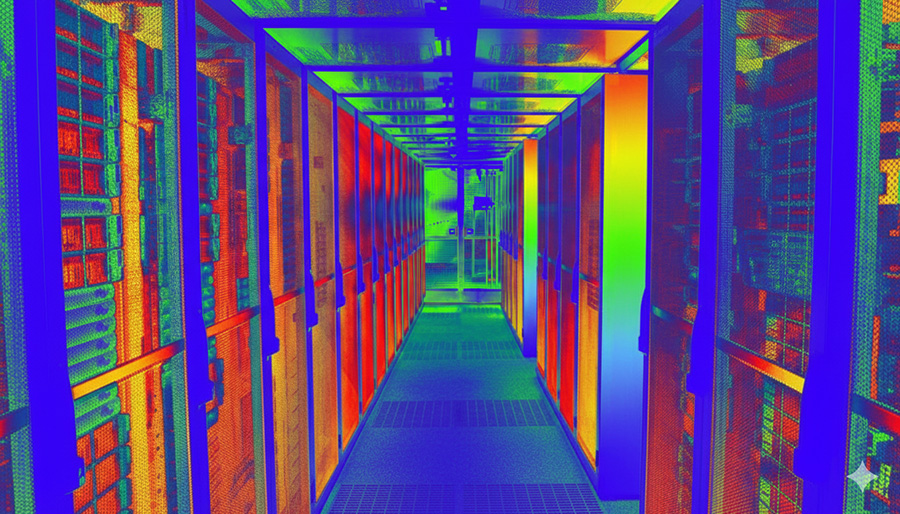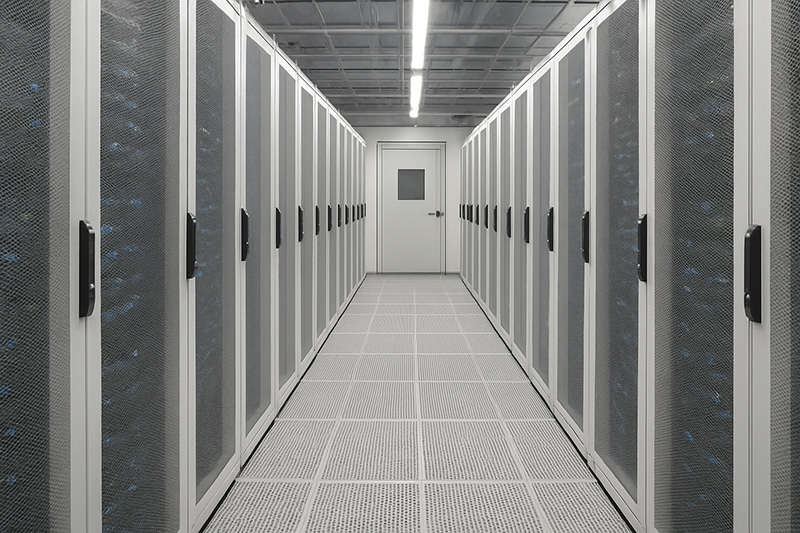Introduction to Data Center Cooling Challenges
Data centers are the digital backbone of today’s economy. From cloud services to AI computations, they handle enormous amounts of data, requiring constant high-performance operation. However, this performance comes at a cost: enormous heat generation. Cooling has become one of the most significant challenges in data center management, not only to ensure operational reliability but also to minimize energy consumption.
Industry reports estimate that cooling accounts for up to 40% of total data center energy use. Without proper planning, this can lead to escalating operational costs, reduced equipment lifespan, and unsustainable energy footprints. This is where CFD Simulation Services and Computational Fluid Dynamics Consulting play a crucial role. By applying advanced airflow and heat transfer modeling, engineers can design data centers that balance cooling efficiency with energy savings.
Why Cooling is Critical in Modern Data Centers
Servers, switches, and storage devices generate concentrated heat loads. If unmanaged, hotspots can form, leading to system failures or forced shutdowns. Traditional cooling methods, such as uniform CRAC (Computer Room Air Conditioning) distribution, are inefficient because they don’t account for uneven thermal loads. CFD Engineering Services allow engineers to simulate real-world conditions, test different cooling layouts, and identify optimal designs without costly trial-and-error.
The Link Between Energy Efficiency and Operational Costs

Energy is one of the largest cost factors in running a data center. Every kilowatt of electricity used by IT equipment requires additional power for cooling. By leveraging Industrial CFD Simulation, operators can identify areas of energy waste, such as over-provisioned cooling or poorly aligned airflow. Optimized cooling strategies not only reduce costs but also help organizations meet sustainability and carbon reduction goals.
What Are CFD Simulation Services?
CFD Simulation Services refer to the use of computational models to analyze fluid flow, heat transfer, and energy dynamics. In the context of data centers, CFD is used to simulate airflow around racks, ceilings, floors, and cooling units. This provides a virtual laboratory for engineers to evaluate design options before physical implementation.
At CFD Vision, our philosophy is simple: smart design leads to better products. This approach applies not only to industrial equipment and consumer devices but also to complex systems like data centers. By applying CFD simulation services to cooling strategies, engineers can achieve the same benefits that drive innovation in other industries — efficiency, reliability, and long-term savings.
Understanding CFD Modeling Services for Thermal Management
CFD Modeling Services create detailed 3D models of the data center environment, allowing engineers to see how air moves and where heat accumulates. These insights are critical for evaluating design elements such as raised floors, containment systems, or liquid cooling.
Applications of Computational Fluid Dynamics Consulting in Data Centers
Computational Fluid Dynamics Consulting goes beyond simulation — it involves expert analysis and recommendations. By hiring Expert CFD Consulting firms, organizations can ensure that design decisions are backed by proven scientific models. Applications include:
- Optimizing cold aisle and hot aisle containment
- Evaluating the effectiveness of in-row cooling systems
- Designing energy-efficient ventilation and duct layouts
- Testing impact of IT equipment relocation or expansion
Benefits of CFD Engineering Services in Data Center Design
The integration of CFD Engineering Services in data center planning brings a wide range of benefits.
Accurate Prediction of Airflow and Heat Distribution
Unlike simplified hand calculations, CFD offers a detailed picture of airflow and temperature distribution. This helps designers predict how cooling will behave under different load conditions.
Identifying Hotspots and Optimizing Cooling Layout
By applying CFD Engineering Consulting, engineers can identify hotspots before they become critical issues. This allows for better placement of cooling units, improved airflow paths, and elimination of thermal inefficiencies.
Reducing Energy Consumption with Industrial CFD Simulation
Through Industrial CFD Simulation, engineers can simulate real-world energy performance. This enables optimization of fan speeds, CRAC placement, and chilled water temperatures — all of which contribute to significant energy savings.
Case Studies of Engineering Simulation Consulting in Data Centers
Improving Cooling System Design with CFD Engineering Consulting
A global cloud provider faced recurring cooling inefficiencies in one of its major data centers. Despite adding more CRAC units, hotspots persisted near high-density racks. Through Engineering Simulation Consulting, the provider applied CFD Modeling Services to virtually test different airflow configurations. The simulation revealed recirculation zones that were reducing cooling effectiveness. By reconfiguring airflow management and optimizing containment strategies, the provider achieved a 20% reduction in energy usage and eliminated critical hotspots.
Achieving Sustainability Goals through Energy Optimization
Another case involved a colocation data center aiming to reduce its carbon footprint. Traditional cooling methods were not aligned with their sustainability targets. Through Computational Fluid Dynamics Consulting, the team evaluated liquid cooling integration combined with airflow optimization. The result was a hybrid cooling design that cut cooling energy use by 35%, helping the company meet international sustainability certifications.
Integration of CFD Modeling with Data Center Digital Twins

Predictive Maintenance and Performance Enhancement
Modern data centers are increasingly adopting digital twin technology—virtual replicas of physical infrastructure that update in real time. By integrating CFD Simulation Services into digital twins, operators can monitor airflow, temperature, and energy use continuously. This enables predictive maintenance: identifying when cooling systems will fail before they do, minimizing downtime and repair costs.
AI and Machine Learning in CFD-Based Cooling Analysis
Artificial Intelligence is becoming a powerful ally in CFD Engineering Services. By combining CFD data with machine learning, data centers can forecast cooling needs based on workload patterns. This means cooling systems operate dynamically — scaling up or down only when required — further reducing unnecessary energy expenditure.
Future of Industrial CFD Modeling in Green Data Centers
Role of Engineering Modeling Consultants in Next-Gen Cooling
As demand for green data centers grows, Engineering Modeling Consultants are becoming essential partners in sustainable design. Their role extends beyond simulation to guiding design decisions that align with environmental regulations and corporate sustainability strategies.
Towards Net-Zero Energy Data Centers with CFD Analysis Service
The ultimate vision for future data centers is net-zero energy consumption. Industrial CFD Modeling is a vital step toward that goal, allowing operators to minimize waste and integrate renewable energy-driven cooling strategies. By designing with efficiency in mind from the start, companies can future-proof their data centers against both rising energy costs and stricter carbon regulations.
Conclusion: Why Expert CFD Consulting is Essential for Data Centers
Data centers are at the heart of our digital economy, but their energy demands present a pressing challenge. Cooling inefficiencies not only increase costs but also limit sustainability. Expert CFD Consulting provides the scientific, data-driven approach needed to overcome these challenges.
By leveraging CFD Simulation Services, CFD Engineering Services, and Industrial CFD Simulation, operators can design data centers that are not only reliable but also energy-efficient. Whether it’s identifying hotspots, optimizing airflow, or planning for future capacity, Engineering Simulation Consulting offers the precision and foresight required for modern data centers to thrive.
FAQs
- How do CFD Simulation Services help in data center design?
CFD simulations analyze airflow and heat transfer, helping engineers optimize cooling layouts and reduce energy consumption. - What is the difference between CFD Engineering Services and Computational Fluid Dynamics Consulting?
CFD Engineering Services focus on simulation execution, while Computational Fluid Dynamics Consulting provides expert analysis and recommendations for design improvements. - Can Industrial CFD Simulation be used for liquid cooling systems?
Yes. Industrial CFD Simulation evaluates both air and liquid cooling systems, ensuring efficient design integration for high-density server environments. - Why should data centers use Engineering Simulation Consulting before construction?
It allows operators to test designs virtually, avoid costly physical modifications, and ensure cooling systems are optimized from the start. - How does Expert CFD Consulting reduce operational costs?
By improving cooling efficiency and minimizing wasted energy, Expert CFD Consulting reduces electricity bills and extends equipment lifespan. - Is CFD Modeling Services applicable for existing data centers, or only new ones?
Both. CFD Modeling Services can optimize cooling for existing facilities and guide sustainable designs for new builds.
External Resource:
For deeper insights on energy efficiency in data centers, see the U.S. Department of Energy’s article.